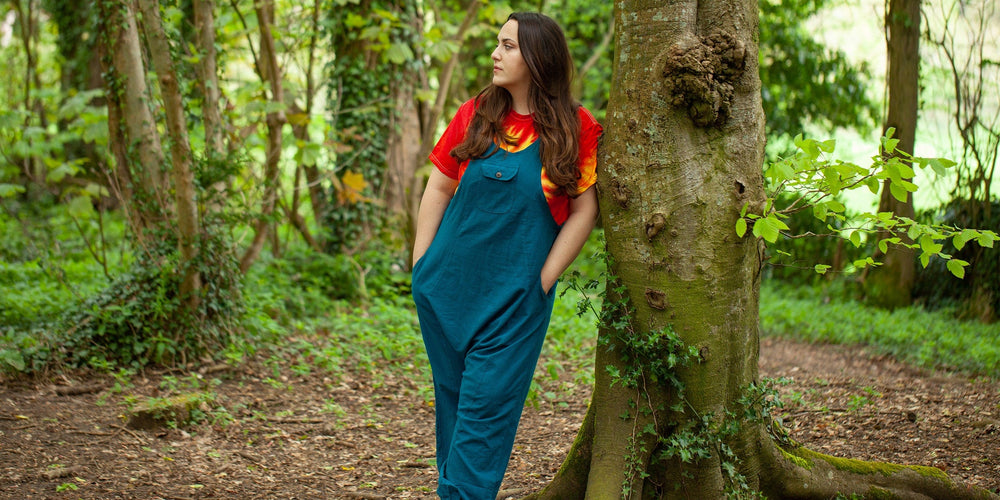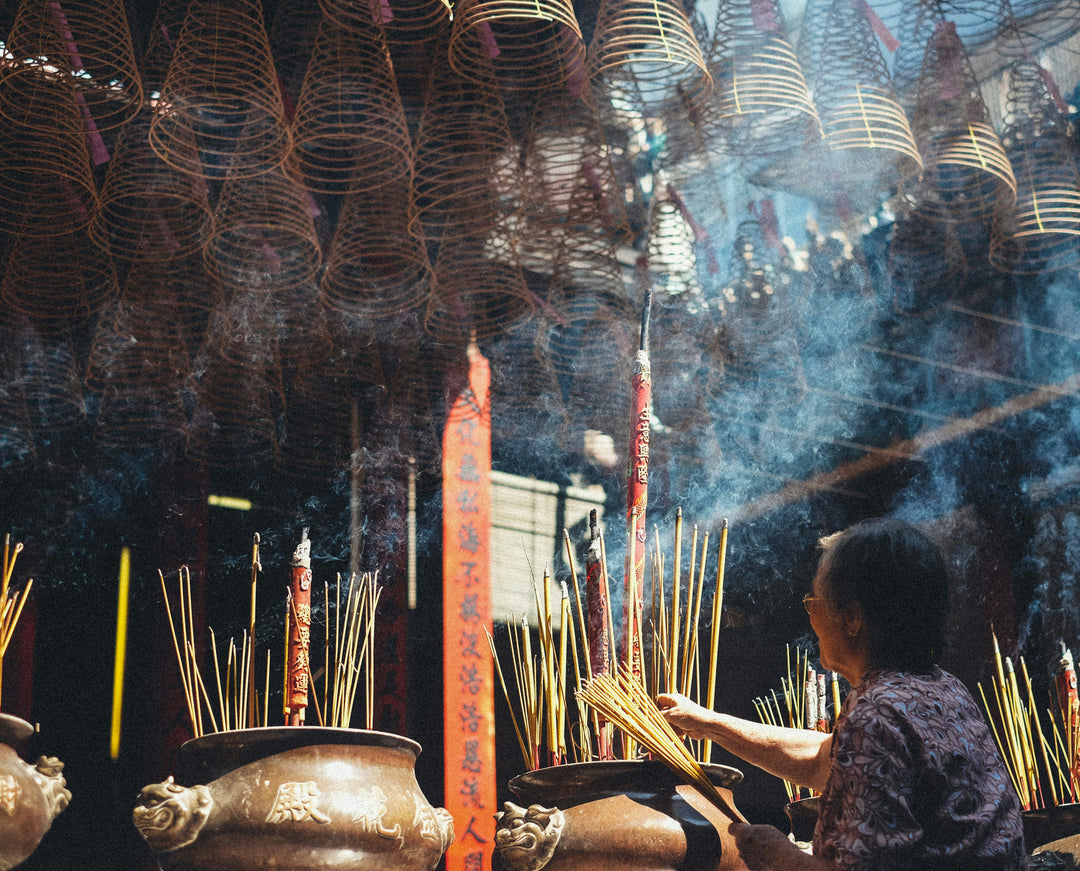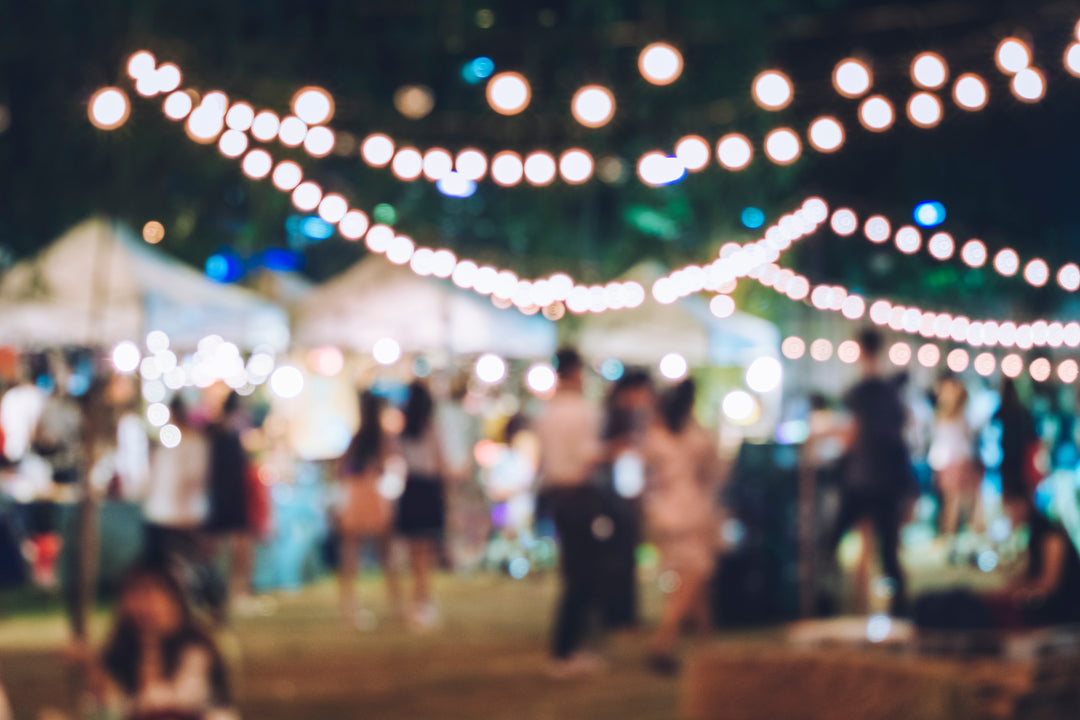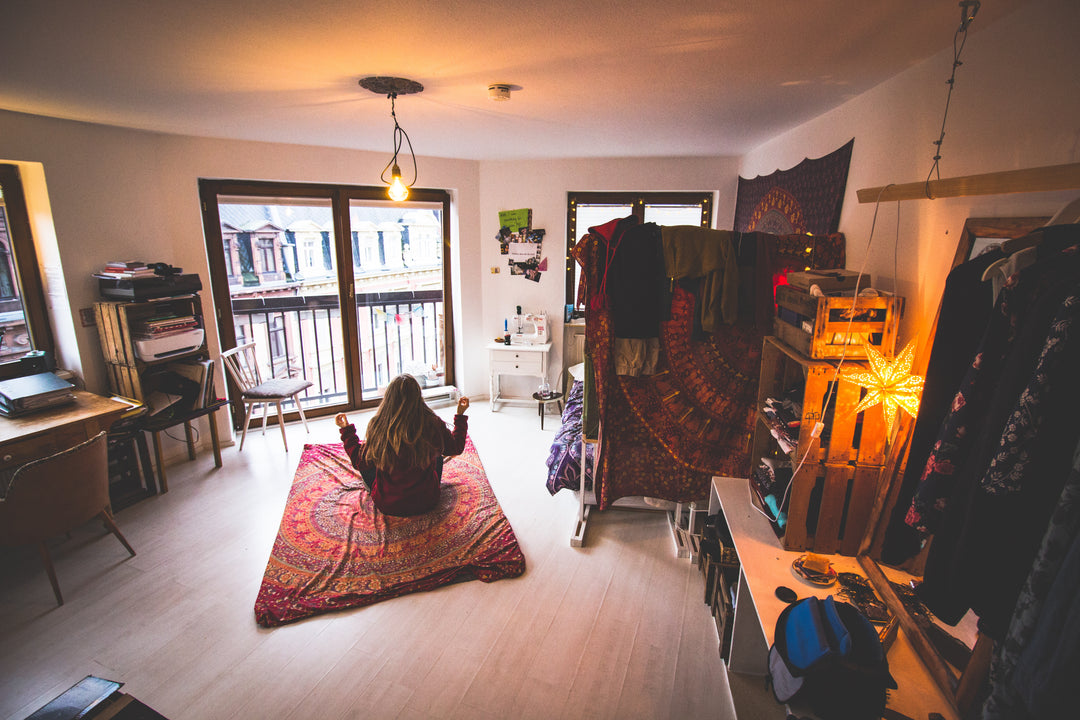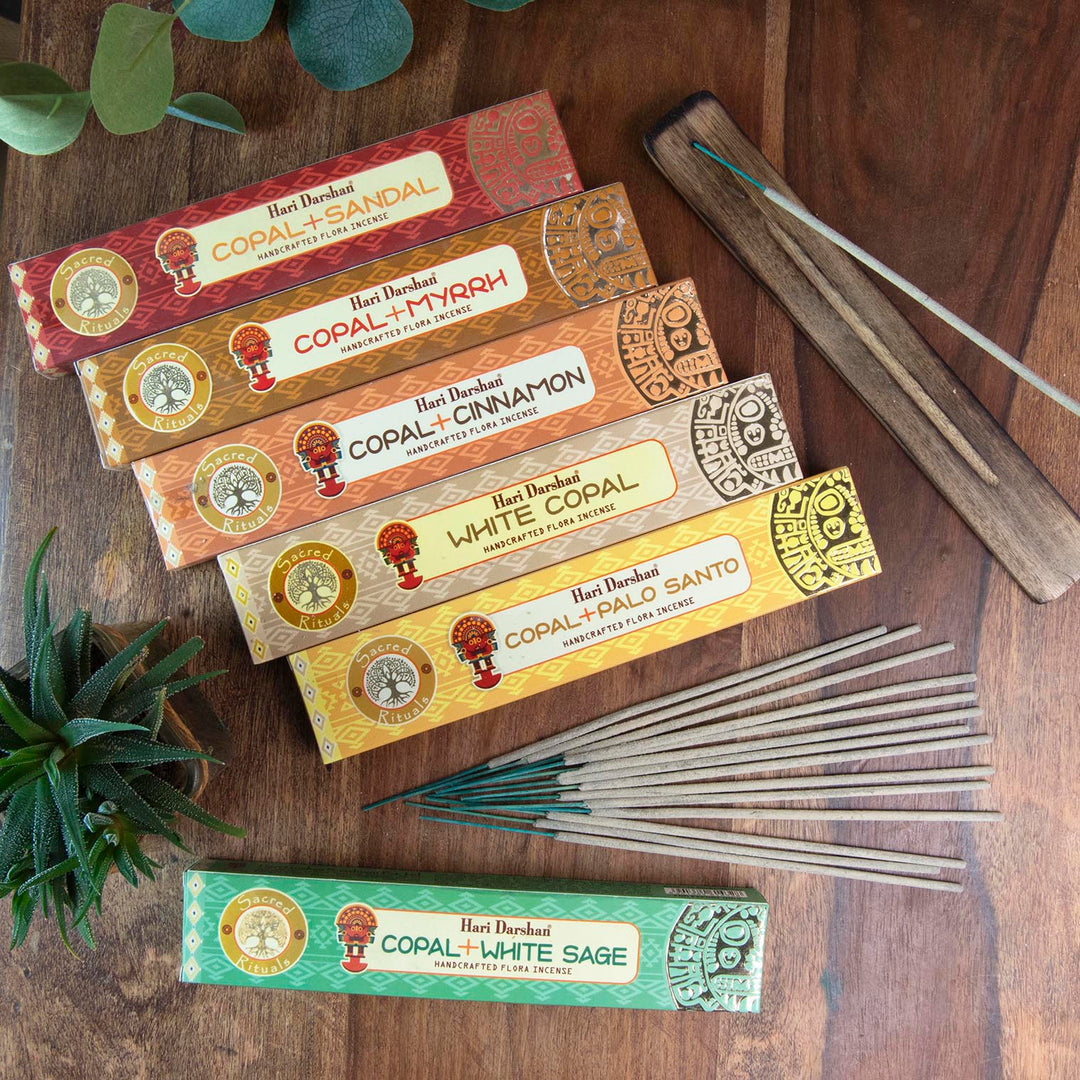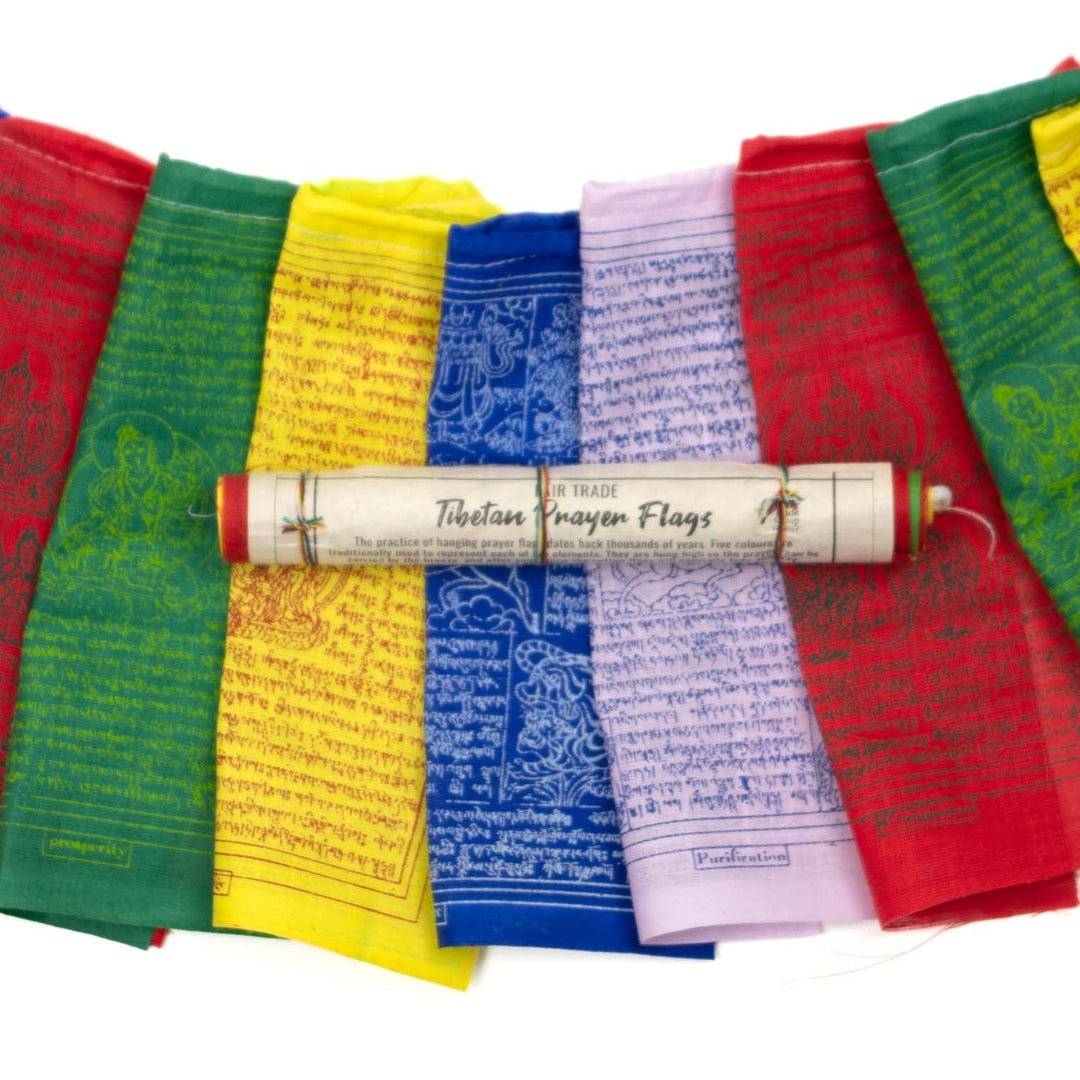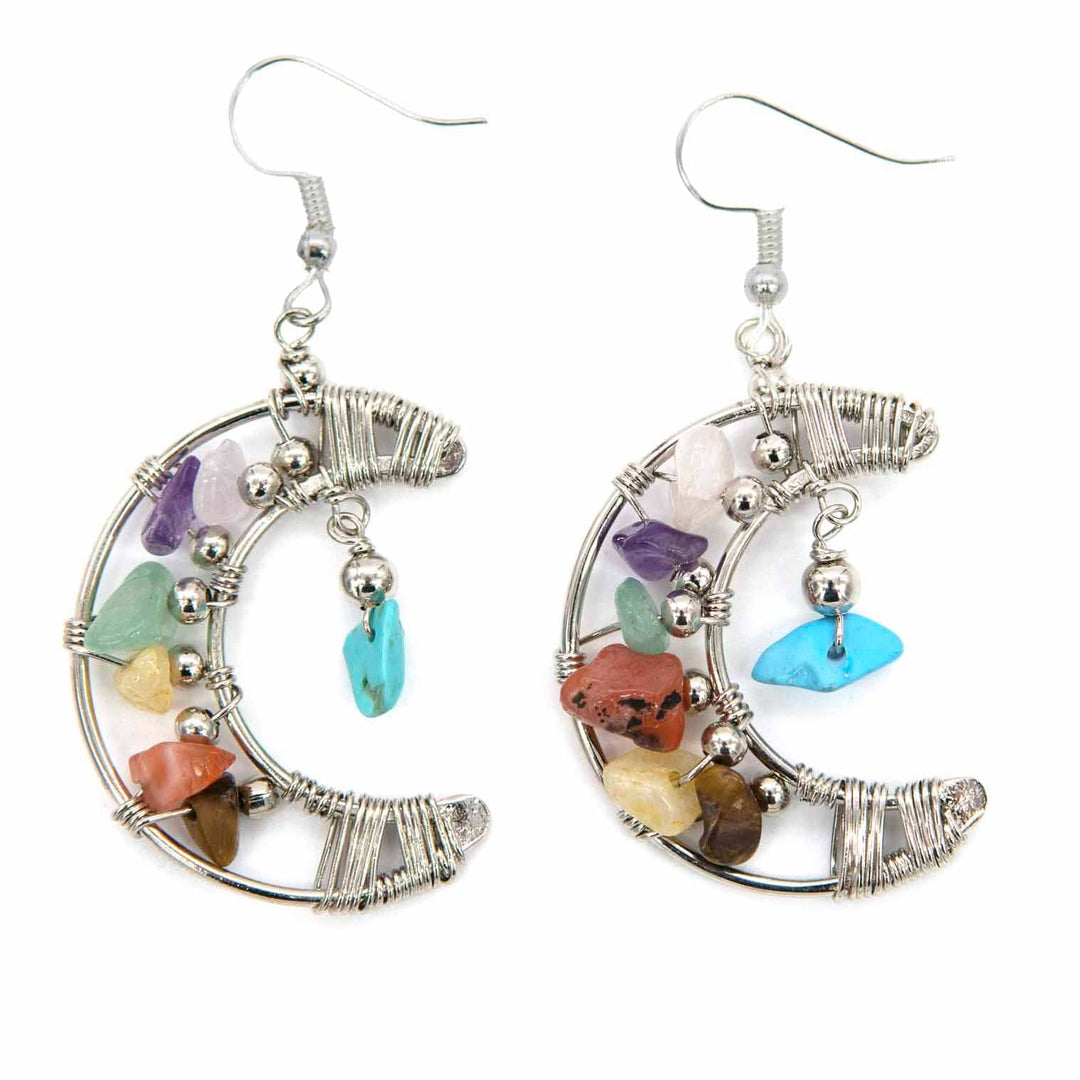What is Boho?
Boho style, also known as Boho chic, Hippie style, and Aesthetic dress, gained boundless popularity in the early 2000’s with icons such as Sienna Miller, Kate Moss and Keira Knightley rocking up to music festivals and award ceremonies wearing long flowing skirts, feathered dangling earrings, mis-matched floral prints and big floppy hats.
But where did this fashion style originate from? And what does Boho style truly mean? In this blog we’re going to explore the origins of Bohemia, the doctrine of the lifestyle, the key elements of Boho fashion, and Boho fashion today.

What does Boho mean?
Bohemianism is the practice of a socially unconventional lifestyle. This usually involves being surrounded by like-minded people, having few permanent ties and perusing musical, artistic or literary paths. Bohemians are often characterised as wanderers, adventurers, or vagabonds.
Over the course of their history, bohemians have often been defined by their joyous poverty, and disregard of money for the pursuit of music, colour, and relationships. They were often considered by the upper class as poorly educated, and vulgar.
What are the origins of bohemia?
The label "Bohemian" was first attributed to artists, writers, students, and intellectuals in early 19th-century France after the stormy years of the Revolution. These creatives were likened to wandering gypsies, and in those times, it was believed that gypsies had come from Bohemia in central Europe (this was in fact incorrect).

Source: Painting by Nicolai Yaroshenko 1886; wikimedia commons; Public Domain
The rapid economic and social change following the revolution, caused the status of artists and other creatives to become financially uncertain, as the market substituted the old system of patronage. The system of patronage saw wealthy clients financially supporting artists, often controlling the form and content of the art. Art patronage operated as proof of wealth, status, and power and could also be used to create propaganda and entertainment. After the replacement of the patronage system, many artists took up a nomadic life style, living cheaply, and wearing worn out and unfashionable or used clothing.
Concurrently, the growing Romantic Movement had introduced the notion of the "Artist as Genius." This meant that an artist was no longer just someone with a talent, but a special kind of person whose creativity was displayed in the way they looked and lived their life. Previously, dress had indicated social status, a trade, or a profession, but with this notion, dress became part of the performance of an individual personality, and the young bohemians used costume to indicate their poverty and originality.
One of the first acts of rejecting mainstream women's fashion was during the pre-Raphaelite movement in the 1830’s, which saw women abandon the crinolines and corsets that they were expected to wear. Instead they flaunted dresses that were limp and shapeless; this marked to beginning of freedom from uncomfortable and restricting attire.
What is the doctrine of bohemianism?
Bohemians view human beings as significant, and believe they have a powerful life force that should be used to become unique individuals; which differs massively from mainstream theologies, which demand humility and obedience.
They also strongly believe that life is a wonderful gift that is given to be enjoyed. It is not merely a test, and it should be celebrated and valued.
They believe that the afterlife consists of our lasting impact on the world and the other human beings that live on it. After death, a bohemian will carry on living in the hearts and minds of the humans they have touched in their lifetime; and this includes the works of art and legends they leave behind that will continue to impact others, even if they did not personally get to touch them.
They adopted an outlook that strongly opposed acts of violence, echoed by icons such as Bob Dylan, John Lennon, Grateful Dead, and Courtney Love.

Source: https://allthatsinteresting.com/a-brief-history-of-hippies
What is Boho style?
The external signs of membership of a bohemian lifestyle are occupation, gait, rhythm of life and of course, clothing.
So, what characterises Boho style when it comes to fashion?
- Loose flowing styles and made from natural fabric.
- Bright, colourful patterned fabrics
- In a time where bras and corsets were obligatory, Bohemian women chose not to wear these undergarments.
- Mismatched patterns
- Loose and very long, flowing hair
- Often wear scarves around their heads or around their necks.
- Layering clothes and jewellery
- Loud, tinkling jewellery
- Second-hand, used clothes
- Items inspired by nature such as flower bracelets and flower crowns
- An obvious look of dishevelment
- Hoop earrings and dangly ear pieces
For over 200 years, Boho style has been a bizarre alternative to the accepted fashion of the time. It’s easy to spot a bohemian in a crowd, as they’ll be representing a colourful counterculture, based on creativity and an indifference to social structures and traditions.
Boho fashion over the years
Boho style is ever evolving and has changed a great deal since the term was first coined. Let's take a look at some of the turning points in Boho fahsion:
Pre-Raphaelite Dress
Rebelling against mainstream fashion which saw women wearing tight corsets and restricting dresses, the Pre-Raphaelites dressed in a way that they considered natural, using natural dyes, faded or “off tones” and jewel-like colours for their garments, and preferred un-corseted silhouettes.

Fazio’s Mistress painted by Pre-Rapaelite artist Dante Gabriel Rossetti in 1863.
Aesthetic Dress
Influenced by the Pre-Raphaelites, the Aesthetics protested the rigid social constraints of the Victorian and created a style based on the clothing of the past, predominantly medieval dress and oriental designs. the typical fashionable aesthetic lady would have red flowing hair often henna enhanced, a pale face, green eyes and wore heelless shoes.

Image source: http://www.fashion-era.com/aesthetics.htm
Early flower-power
Effie Gray, wife of pre-Raphaelite John Millais was among the first to put flowers in her hair as a decoration, which later influenced the ‘flower power’ hippy movement.

Image source: https://www.pinterest.co.uk/pin/409123947380421442/?lp=true
The Rational dress society
The rational dress society was against the introduction of any fashion in dress that either deforms the figure, impedes the movements of the body, or in any way tends to injure the health. They protested the wearing of tightly-fitting corsets, high-heeled shoes, heavily-weighted skirts, by wearing big baggy bloomer trousers.

Image source: https://kaggsysbookishramblings.wordpress.com/2016/03/31/light-at-the-end/rational-dress/
The "Dorelia" look
Dorothy "Dorelia" McNeill, married to artist Augustus John wore tight fitting, hand-sewn, colourful bodices with full skirts and long silver earrings.

Image source: https://en.wikipedia.org/wiki/Dorelia_McNeill
'Beatnik' style
The term ‘Beat Generation’, originally meaning down-trodden, was created by Jack Kerouac to describe the group of individuals he was hanging around with in New York. The stereotypical Beatnik style saw lots of black clothing, striped shirts, oversized sweaters, cowl neck tops, skinny jeans, thick/dark glasses, berets and loafers.

Image source: Pinterest – Audrey Hepburn in a scene from Funny Face, 1957
The ‘hippie style’
Characterised by long hair, women wearing little or no makeup, with many going braless, brightly coloured clothing, lots of tie dye and non-Western inspired clothing with Native American, Asian, African and Latin American influence. Their clothing was often hand-made or second hand, rejecting corporate culture.

Image source: https://superstarfloraluk.com/5359189-Late-60s-Hippie-Fashion.html
'Boho-chic'
In the early noughties we saw boho fashion evolve into long floaty skirts, cropped jackets, furry gilets, cowboy boots and lots of embroidery.

Image source: https://tomandlorenzo.com/2017/05/met-gala-2017-the-olsen-twins-red-carpet-fashion/
Boho fashion today
It has been said that rebellion of the old bohemian sort is no longer conceivable, as there is no longer one single mainstream in society to rebel against. It has instead been replaced with "neo-tribes,"- groups with fluid membership of individuals who are no longer challenging each other but express a faithfulness to a particular style of music, dress, and way of life.
And as casual originality and individuality of Boho style has itself become part of mainstream fashion, with celebrities flaunting scruffy looking hair and high street stores selling garish and multi patterns garments, is it still possible to live Boho?

Clothing from HippyClothingCo: https://www.hippyclothingco.co.uk/
Well here at HippyClothingCo we say... Boho is still possible. We think it is still conceivable to express your unique individuality through your lifestyle and the garments you choose to wear.
Because Boho style is not only what you wear on the outside, but it must be entered through the mind, through some consciousness of belonging. We believe that what determines whether a certain style of dress or rhythm of life is bohemian or not, depends entirely on what it means to you.
Browse our store and see what calls out to your mind, body and sprit!


